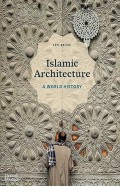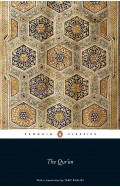Islamic Geometric Design
By: Eric Broug
-
Rs 11,696.75
- Rs 17,995.00
- 35%
You save Rs 6,298.25.
Due to constant currency fluctuation, prices are subject to change with or without notice.
| Book | |
| What's in the Box? | 1 x Islamic Geometric Design |
Islamic Architecture - A World History
By: Eric Broug
Rs 14,996.25 Rs 19,995.00 Ex Tax :Rs 14,996.25
Zubin Mehta: A Musical Journey (An Authorized Biography)
By: VOID - Bakhtiar K. Dadabhoy
Rs 472.50 Rs 1,050.00 Ex Tax :Rs 472.50
The Myth of Normal - Trauma, Illness, and Healing in a Toxic Culture
By: Gabor Maté
Rs 2,236.00 Rs 2,795.00 Ex Tax :Rs 2,236.00
Everything You Need to Ace Geometry in One Big Fat Notebook
By: Workman Publishing
Rs 3,246.75 Rs 4,995.00 Ex Tax :Rs 3,246.75
The Messenger: The Meanings of the Life of Muhammad
By: Tariq Ramadan
Rs 2,076.00 Rs 2,595.00 Ex Tax :Rs 2,076.00
Rumi :The Big Red Book The Great Masterpiece Celebrating Mystical Love And Friendship -
By: Coleman Barks
Rs 2,156.00 Rs 2,695.00 Ex Tax :Rs 2,156.00
Most Beautiful Names Of Allah
By: Samira Fayyad Khawaldeh
Rs 1,231.75 Rs 1,895.00 Ex Tax :Rs 1,231.75
The Myth of Normal - Trauma, Illness, and Healing in a Toxic Culture
By: Gabor Maté
Rs 2,236.00 Rs 2,795.00 Ex Tax :Rs 2,236.00
Everything You Need to Ace Geometry in One Big Fat Notebook
By: Workman Publishing
Rs 3,246.75 Rs 4,995.00 Ex Tax :Rs 3,246.75
No recently viewed books available at the moment.
Zubin Mehta: A Musical Journey (An Authorized Biography)
By: VOID - Bakhtiar K. Dadabhoy
Rs 472.50 Rs 1,050.00 Ex Tax :Rs 472.50
Islamic Architecture - A World History
By: Eric Broug
Rs 14,996.25 Rs 19,995.00 Ex Tax :Rs 14,996.25
The Myth of Normal - Trauma, Illness, and Healing in a Toxic Culture
By: Gabor Maté
Rs 2,236.00 Rs 2,795.00 Ex Tax :Rs 2,236.00
Everything You Need to Ace Geometry in One Big Fat Notebook
By: Workman Publishing
Rs 3,246.75 Rs 4,995.00 Ex Tax :Rs 3,246.75














-120x187.jpg?q6)

















